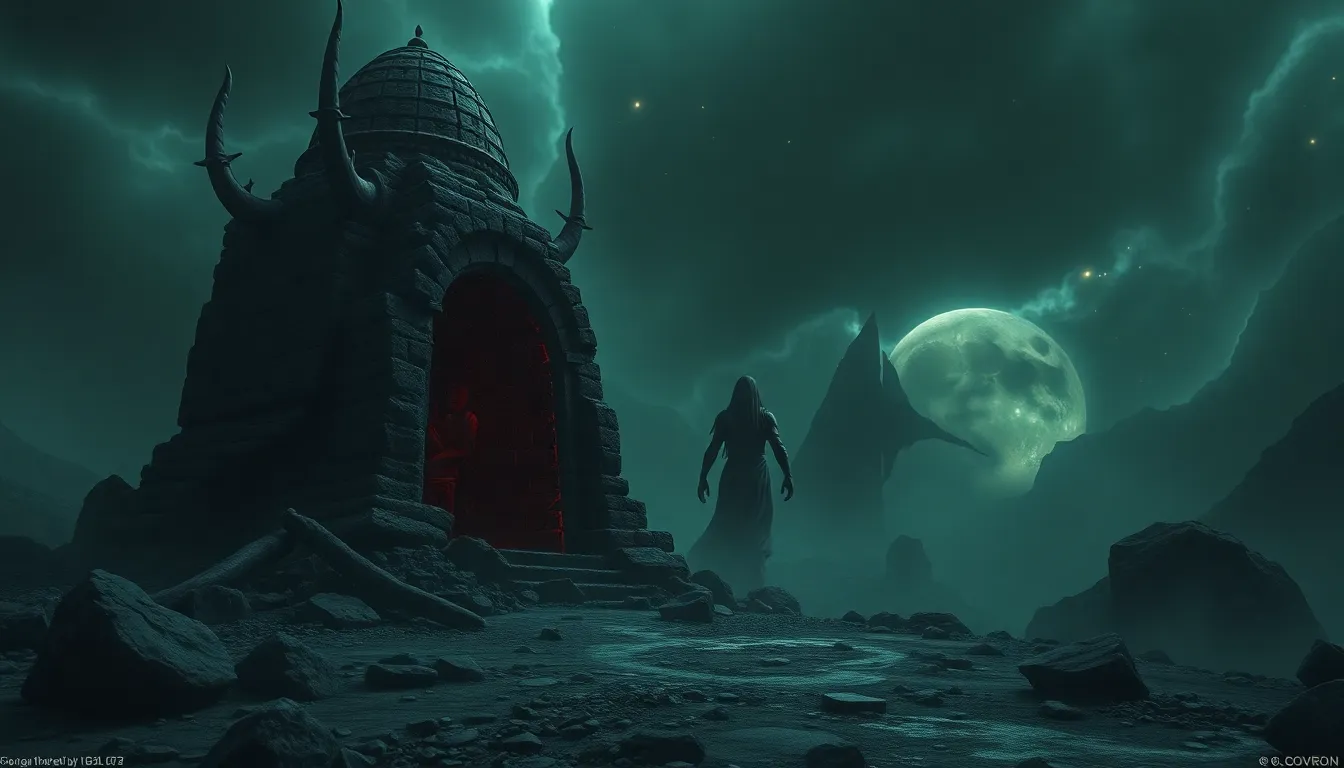Underworld Myths: The Stories That Shape Our Understanding of Death
I. Introduction to Underworld Myths
Underworld myths are narratives that explore the realm of death and the afterlife, providing insight into how different cultures perceive mortality and what lies beyond. These myths serve as allegories that help societies make sense of death, offering explanations and comfort in the face of the inevitable.
The cultural significance of death is profound, as it shapes rituals, beliefs, and practices surrounding mourning and remembrance. By examining underworld myths, we can gain a deeper understanding of how various societies have grappled with the concept of death throughout history.
This article will explore the historical context of underworld myths, delve into major myths from various cultures, highlight common themes, analyze the role of deities, and discuss their relevance in contemporary culture. Additionally, we will examine psychological and philosophical perspectives, and provide a comparative analysis of these myths across different cultures.
II. Historical Context of Underworld Myths
The evolution of death myths across civilizations reveals much about humanity’s changing relationship with mortality. In ancient times, death was often viewed as a transition rather than an end, leading to rich narratives about the afterlife. Over the centuries, these beliefs have evolved, influenced by philosophical thought, religious doctrines, and societal changes.
For instance, ancient Egyptians believed in a detailed afterlife journey, while early Christians focused on resurrection. Contemporary beliefs often blend these ancient elements with modern existential thoughts, leading to a diverse understanding of what happens after death.
Historical events, such as plagues, wars, and natural disasters, have also influenced the development of underworld myths. Societies facing widespread loss often created more elaborate mythologies to explain and cope with their grief.
III. Major Underworld Myths from Various Cultures
A. Greek Mythology: Hades and the River Styx
In Greek mythology, the underworld is ruled by Hades, a complex figure embodying both the finality of death and the riches of the earth. Souls are ferried across the River Styx by Charon, the boatman, who demands payment for his services, often represented by an obol placed in the deceased’s mouth.
- The Role of Charon: Charon’s demand for payment symbolizes the belief that one must be prepared for the journey to the afterlife.
- Different Realms within Hades: Hades comprises various regions, including Elysium (a paradise for heroes) and Tartarus (a place of punishment for the wicked).
B. Egyptian Mythology: The Duat and the Weighing of the Heart
In Egyptian mythology, the Duat is the realm of the dead, where souls embark on a perilous journey after death. Osiris, the god of the afterlife, plays a crucial role in this journey, guiding souls through challenges.
- The Journey of the Soul: Souls face various tests, including encounters with mythical creatures.
- The Weighing of the Heart: The heart of the deceased is weighed against the feather of Ma’at, representing truth and justice. If the heart is lighter, the soul is granted passage to the afterlife; if heavier, it faces annihilation.
C. Norse Mythology: Hel and Valhalla
Norse mythology presents a duality in afterlife destinations: Hel, ruled by the goddess Hel, is for those who did not die a heroic death, while Valhalla, the hall of Odin, is reserved for warriors who died in battle.
- The Duality of Afterlife Destinations: This reflects the Norse values of honor and bravery.
- The Role of Warriors: In Norse culture, death in battle was seen as the ultimate honor, granting access to Valhalla and eternal feasting.
IV. Common Themes Across Underworld Myths
Despite the diversity of underworld myths, several common themes emerge:
- The Journey of the Soul: Many myths depict a journey that the soul must undertake, often fraught with challenges.
- Judgment and Moral Accountability: The soul’s fate is frequently determined by its moral actions in life, emphasizing accountability.
- Symbolism of Rivers, Gates, and Guides: Rivers often symbolize transitions, while gates represent barriers to the afterlife, and guides are essential for navigating these realms.
V. The Role of Deities in Underworld Myths
Deities play pivotal roles in underworld myths, often personifying death itself or acting as guides for souls. These figures can be seen as benevolent, helping souls navigate the afterlife, or malevolent, punishing the wicked.
- Personifications of Death: Different cultures depict death in various forms, reflecting societal attitudes towards mortality.
- Responsibilities of Deities: Deities often oversee the judgment process, ensuring that souls receive their due based on earthly actions.
- Malevolent vs. Benevolent Figures: While some deities are portrayed as merciful, others embody fear and punishment, reflecting the complexities of human beliefs about justice and morality.
VI. Underworld Myths in Contemporary Culture
Underworld myths continue to influence contemporary culture, appearing in literature, film, and art. Modern adaptations often reinterpret these ancient narratives, making them relevant to contemporary audiences.
- Adaptations in Literature and Film: Many films and books draw on themes from underworld myths, creating new stories that resonate with modern audiences.
- Relevance in Modern Understandings: These myths help individuals confront their fears of death and the unknown, providing frameworks for understanding loss.
- Resurgence of Interest: In recent years, there has been a notable increase in media exploring death-related themes, indicating a cultural shift towards confronting mortality.
VII. Psychological and Philosophical Perspectives
Underworld myths have a significant impact on human psychology, particularly concerning the fear of death. They provide narratives that can help individuals process their thoughts and feelings about mortality.
- Impact on Human Psychology: Myths can alleviate fear by offering a structured understanding of death and the afterlife.
- Philosophical Interpretations: Various philosophical schools have explored the implications of death, often using myths as a reference point for deeper existential inquiries.
- Coping with Loss and Grief: Myths provide comfort and frameworks for understanding loss, helping individuals navigate their grief.
VIII. Comparative Analysis of Underworld Myths
A comparative analysis of underworld myths reveals both similarities and differences in beliefs about the afterlife.
- Similarities: Many cultures share the belief in an afterlife journey and the significance of moral accountability.
- Differences: The specific narratives, deities, and practices vary widely, reflecting unique cultural values and historical contexts.
- Cross-Cultural Influences: As cultures have interacted, their myths have influenced one another, leading to a rich tapestry of beliefs surrounding death and the afterlife.




